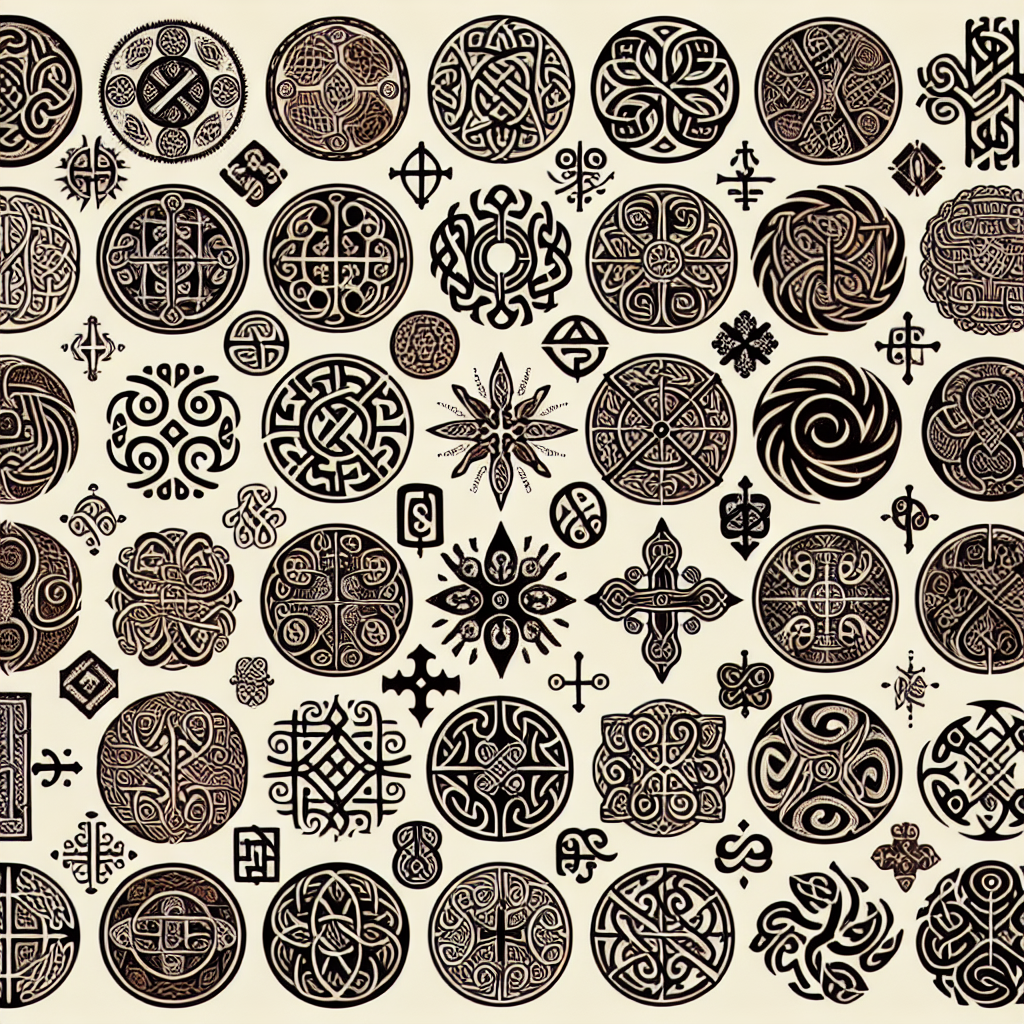20 Ancient Celtic Symbols and Their Meanings

With the enchanting allure of ancient civilizations, Celtic symbols hold a significant place in cultural history, offering a window into the beliefs, values, and traditions of the Celts. These symbols, intricate and rich with meaning, have been used for centuries, transcending their origins to influence art, literature, and even modern spirituality. In this article, we explore 20 ancient Celtic symbols and delve into their meanings, uncovering the stories and significance behind each one. Whether you are a history enthusiast, a lover of mythology, or simply curious about ancient symbols, this guide will provide you with a comprehensive understanding of Celtic symbols and their enduring legacy.
The Triskelion: Movement and Progress
The Triskelion, consisting of three interlocking spirals, is a prominent Celtic symbol associated with the concept of progress and movement. The three spirals represent forward motion and the continuous energy of life. This symbol was used not only as a decorative element but also as a philosophical symbol to represent the dynamics of nature and the universe.
The Triquetra: The Trinity Concept
Also known as the Trinity Knot, the Triquetra comprises three interconnected arcs suggestive of a three-pointed shape. It’s widely believed to symbolize concepts that come in threes, such as mind, body, and soul or earth, sea, and sky. The Triquetra is especially significant in Christianity, where it denotes the Holy Trinity.
The Celtic Cross: Faith and Unity
The Celtic Cross, with its unique circle intersecting the cross, is one of the most recognizable symbols of Celtic identity. This symbol combines the traditional Christian cross with a circular motif, representing unity, wholeness, and balance. It also indicates the blending of traditional Celtic beliefs with Christian faith.
The Awen: Inspiration and Enlightenment
The Awen symbol, represented by three rays leading up to a path to a high point, is a Druidic symbol for inspiration and divine illumination. The three rays are interpreted to mean spirit, mind, and body; or love, wisdom, and truth. It is a lesser-known symbol that holds deep spiritual significance.
The Dara Knot: Strength and Wisdom
The Dara Knot is inspired by the root system of an oak tree. In Celtic culture, the oak tree is revered as sacred and symbolizes strength, endurance, and wisdom. The intricacies of the knot represent the complexity of the roots and the strength they provide to the tree.
Symbolic Animals in Celtic Mythology
Celtic mythology is rich with symbols represented by animals, each carrying a specific meaning and significance.
The Celtic Horse: Freedom and Victory
The Celtic Horse symbolizes freedom, stamina, and success in battle. Horses were highly valued by the Celts, seen as crucial for success in war and symbols of societal status.
The Salmon of Knowledge: Wisdom and Prophecy
According to legend, the Salmon of Knowledge possessed all the world’s knowledge. The symbol of the salmon represents wisdom, and it is said that whoever eats the salmon will gain this knowledge.
The Celtic Wolf: Guardianship and Mystery
The wolf in Celtic tradition is a protector of the woods and symbolizes the bond between family and community. Wolves are often portrayed as guides, helping those who venture into the unknown.
Celtic Trees: More Than Just Wood
In Celtic tradition, trees are not merely sources of material but are imbued with profound spiritual significance.
The Oak Tree: Doorway to Mysteries
The Oak Tree holds a special place in Celtic symbolism, representing strength, endurance, and protection. It is often considered the most sacred of trees, serving as a meeting place for the Druids and a gateway to other worlds.
The Birch Tree: New Beginnings
The Birch Tree stands for new beginnings and purification. It is associated with the renewal of spring and is often used in rituals to promote purification.
The Yew Tree: Immortality and Rebirth
Revered for its longevity, the Yew Tree symbolizes immortality and rebirth. It is often found in sacred sites and cemeteries as a guardian of the spirits.
Geometric Shapes and Their Meanings
Celtic art is renowned for its intricate geometric patterns, each with its symbolic interpretation.
The Spiral: The Continuity of Life
Commonly found in Celtic art, the spiral represents the continuity of life, the cycles of the seasons, and the idea of growth and expansion.
The Circle: Wholeness and Inclusion
The circle is a fundamental shape in Celtic symbolism, representing totality, wholeness, and inclusion. It is often used to denote unity and eternal life.
The Legacy of Celtic Symbols
Celtic symbols transcend mere art; they are powerful representations of the Celts’ innermost beliefs and values, woven into the fabric of their cultural identity. They continue to inspire and influence, offering timeless insights into a profound and mystical heritage.
By exploring these 20 ancient Celtic symbols, we connect with a past that is both mysterious and enlightening, gaining a deeper appreciation for the wisdom and artistry of the Celtic people. These symbols serve as a bridge between the past and present, reminding us of the interconnectedness of all things and the universal themes that guide humanity.
Key Takeaways:
-
- Celtic symbols are deeply rooted in nature and the cosmos, reflecting the Celts’ reverence for the natural world.
-
- Each symbol holds a specific meaning, often associated with spirituality, wisdom, and the cycles of life.
-
- The legacy of Celtic symbolism continues to influence modern culture in various forms, from art to spirituality.
If you enjoyed this exploration of ancient Celtic symbols and their meanings, consider delving further into the rich tapestry of Celtic history and mythology. Their timeless wisdom and artistic beauty remain relevant today, offering inspiration and guidance in our contemporary lives.
